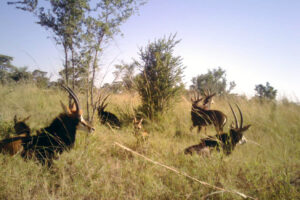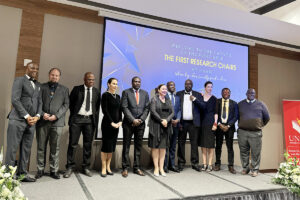Mr. Jim Kairu and his students from the Department of Wildlife Management and Tourism Studies (DWMTS) have been studying the breeding ecology of the southern carmine bee-eater (Merops nubicoides des murs & pucheran) along the Sikunga Channel in the Zambezi Region. The Sikunga colony has between 4000 and 5000 Carmine bee-eaters.

The basic purpose of this study is to contribute to biological knowledge of the southern carmine bee-eater by providing baseline data on its reproductive ecology for comparison with its breeding in the future. Secondly, it will produce knowledge on the influence of socio-ecological effects on the breeding ecology of this species. Knowing about the reproductive performance of a species is critical to its conservation.

The results of this study will inform action needed to improve management of the species and hopefully halt its reported decline. In order to produce effective conservation actions, basic information on the species must be readily available. Currently, only miscellaneous observations on the breeding ecology of this species is appearing in the literature.


The long-term goal is to identify the roosting sites of these birds while breeding at Sikunga, as well as to study their migration patterns and routes.
Original story by Aretha Chataa





